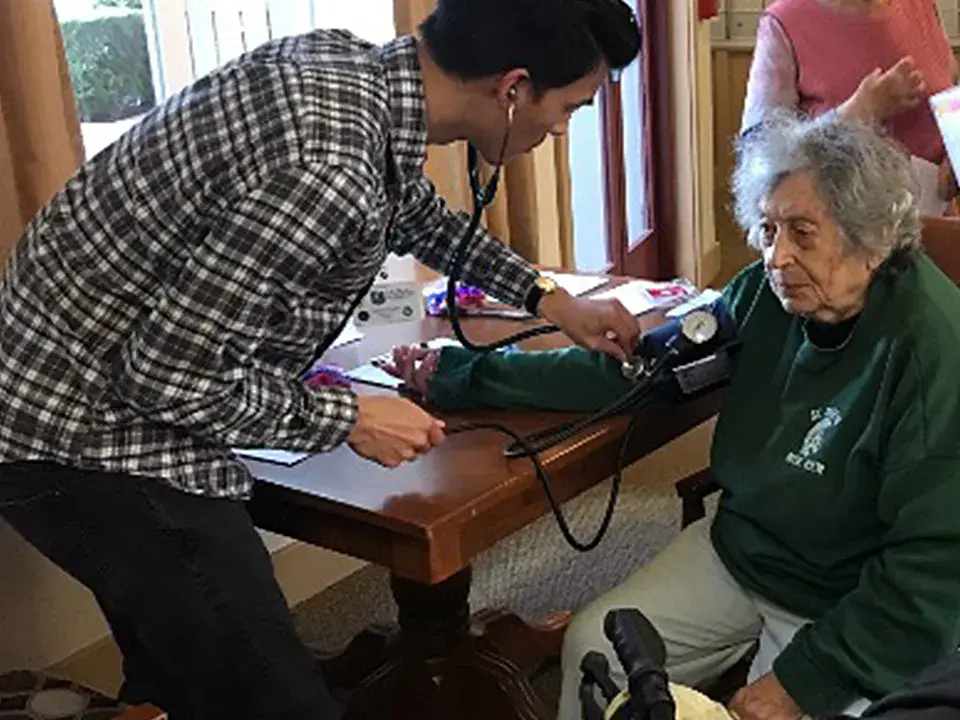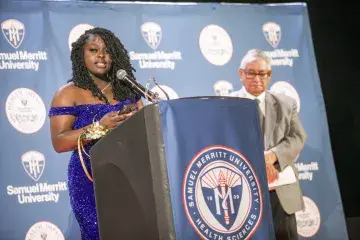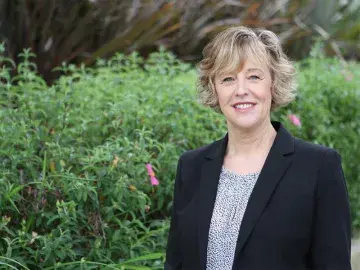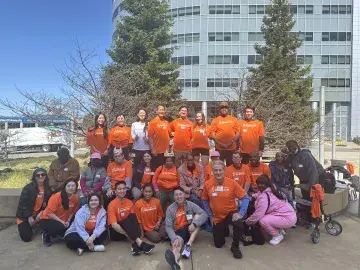Zoom for Health, How a Skeptic Became a Believer

After greeting the half-dozen or so seniors who had joined the Zoom exercise class, SMU nursing students queued up Sam Cooke. As the song “Having a Party” faded in, one of the students announced the session exercises, another demonstrated the moves, and a third translated in Mandarin. The seniors began to move in time to the music, exercising from their chairs.
There were seated jumping jacks, seated marches, bicep curls, and leg extensions, all using resistance bands. Students covered cardio and the major muscle groups for over 45 minutes, all with exercises designed to keep seniors mobile and active. Throughout, the students offered tips on modifying exercises as well as praise: “Nice job!” “You’re a pro!”
The seniors loved it, even breaking into a round of applause at the end.
It was a similar scene that turned Kelsey Catania, ASBN ’20, originally a skeptic, into a believer.
“When I first heard ‘Zoom,’ I questioned whether we’d be able to do this. Could we really make an impact?” said Catania, who at first doubted the ability to create authentic connections virtually but soon found her screen full of smiling faces giving her the thumbs up. “The residents were so excited for our sessions. It provided a little normalcy in their lives even though it wasn’t like being together in the apartment complex’s common room.”
80,000 community hours
Part of a community nursing class at Samuel Merritt University’s San Mateo campus, this hands-on clinical program has connected students to MidPen Housing, which provides affordable housing for families and seniors on the Peninsula and in the South Bay. For nearly a decade, SMU students have contributed about 80,000 community clinical hours. When the pandemic made it impossible to meet in-person with residents, SMU pivoted and connected students and residents virtually. Now, with a $15,000 grant from the Scott Beamer Memorial Fund, the class will reach even more seniors through the purchase of 15 tablets that will allow residents without their own devices to access Zoom. The fund is designed to support faculty and student involvement in the community.
With the virtual approach, students lead weekly Zoom exercise classes, offer online health seminars on different topics such as diabetes and stroke awareness, send out a newsletter with health and exercise tips, and hold individual online consultations with residents to discuss health concerns. Those concerns vary but have touched on issues related to hypertension, healthy eating, and mental health. Students lead the educational sessions under the guidance of a faculty member.
“Students get a great opportunity, and the residents love it,” said Loretta Camarano, associate professor of nursing and the clinical director. “They want someone to hear them, to see them. They also enjoy teaching the students. I’ll tell students, ‘Let them teach you. They’ve been living with their conditions for a long time. Listen, and then be a resource.’”
Surveys have shown that residents exercise more each week because of the students’ classes, and often increase their strength, Camarano said. For many, such as Irina Grach, the interaction with students is just as important to their well-being as the actual exercising or consultations.
“We all get from them their enjoyment from life. It gives us a lot of good pleasure,” said Grach, who is originally from Ukraine. “The students are so pleasant and so wonderful. They ask about us and our backgrounds and we ask about theirs. We become good friends in addition to them being our teachers.”
Art of caring
For their part, students learn directly about seniors’ health issues and put their nursing knowledge into action.
“It was thrilling the first time I was asked a question in a one-on-one and realized, ‘I know this,’ and the words started coming out to answer the question,” said Catania. “What you’ve learned in a book or lecture has a real-world applicability.”
Students also see firsthand the many roles people have. That translates, Catania said, to an understanding that patients’ lives are more complex than simply being a patient in a provider’s office or hospital. “This clinic helped me see individuals not just as patients, but also as mothers, fathers, daughters, sons, and more,” she said. “I’m mindful that everyone has a story.”
Above all, she said, the course emphasizes the relationship and the art of caring.
“There’s so much more to people’s conditions and sometimes they just need that human connection. I carry that with me now. If there’s a patient that might be a little withdrawn, I’ll remember to take a step back and first create that trust,” Catania said.


